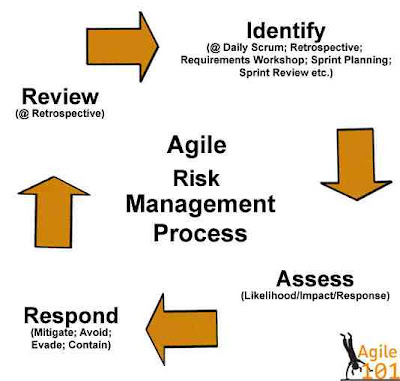Agile Project Management: Risk Management
 This is a guest blog post from Tara Whitaker. Tara has recently launched a new agile blog called Agile 101.
This is a guest blog post from Tara Whitaker. Tara has recently launched a new agile blog called Agile 101.It really is amazing how much content Tara has already published on agile project management and agile programme management.
Here's a taster...
A Risk is an uncertain event that will impact your chosen path should it be realised. Risks are events that are not currently affecting you - they haven't happened yet. Once a risk is realised, it has the potential to become an Issue(s).
The following activities are more traditionally carried out by a Project Manager. In Agile working environments, the responsibility for risk management is shared by all involved.
- Identify a risk
- Assess a risk
- Respond to a risk
- Reviewing risks
By promoting communication, distributing the responsibility of risk identification/mitigation and enabling ourselves to respond quickly to change, we are fundamentally better equipt to dealing with Risk than more traditional environments.
With that said, there don't seem to be any official guidelines on how to manage risks within an Agile environment, so I'll combine my personal views with notes and ideas I've found scattered around the web.
The articles below provide an overview of Risk Management within an Agile context and take you through the four key stages of the Agile Risk Management Lifecycle:
- Agile Risk Management – Risk Identification (Step 1 of 4)
- Agile Risk Management – Assessing Risks (Step 2 of 4)
- Agile Risk Management – Risk Response (Step 3 of 4)
- Agile Risk Management – Risk Review (Step 4 of 4)
- Agile Risk Management – The difference between Risks and Issues
- 12 Principles of Risk Management (PMBOK - with an Agile slant)
Tara.






















0 comments:
Post a Comment